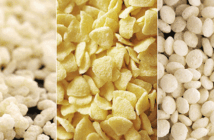
With the rise in popularity of novel plant-based foods, there is some concern over the antinutrients they may contain, including lectins, oxalates, glycoalkaloids, protease inhibitors, goitrogens, phytoestrogens, and tannins.
Antinutrients occur naturally in many plant-based foods but also in animals. In plants, these compounds defend against insects, parasites, bacteria and fungi. They occur in whole grains, vegetables and legumes and may be higher in plant-based diets.
True to their name, antinutrients block or interfere with the absorption of other nutrients, in particular minerals such as calcium, iron, potassium, magnesium and zinc.
Despite their bad reputation, however, antinutrients also exert health benefits. For example, phytates may lower cholesterol. Some antinutrients have been associated with reduced risk of cardiovascular disease, diabetes and some cancers.
The relative impact of antinutrients on human health is an area of active research. There is still a lot to understand about the extent to which nutrient loss occurs because of antinutrients, which individuals are susceptible and what the impact of food production is on antinutrients. Ultimately, the goal is to understand what the optimal composition of different foods is balancing the positive health effects and minimising the effects of antinutrients
For many consumers, the health benefits of eating foods with very low concentrations of antinutrients is likely to outweigh the negatives. Measures like eating a varied diet across the day to offset losses in nutrient absorption at a single meal are mostly adequate. But that may not be the case for people with increased risk of diseases related to mineral deficiencies, like osteoporosis or anaemia. Because of their dependence on plant-based foods, vegetarians and vegans may also be more at risk.
For food producers developing plant-based foods, it is important to ensure that antinutrients are not being concentrated in these products. Traditional processes, like soaking, sprouting, fermentation and boiling, can remove antinutrients from foods. Technical processes, like chemical treatment, extrusion, extraction, enzymatic treatments and high heat processes, may be effective too – or a combination of techniques rather than a single process.
Dr Jocelyn Eason has a PhD in Plant Physiology from Otago University and an MBA from Massey University. In her current role, Dr Eason manages Plant and Food Research’s Food Innovation Portfolio, which includes teams that investigate human responses to food, the influence of food on human nutrition and wellness, and the production and supply of nutritionally rich foods.
The information and opinions within this column are not necessarily the views or opinions of Hot Source, NZ Food Technology or the parent company, Hayley Media.




























































































